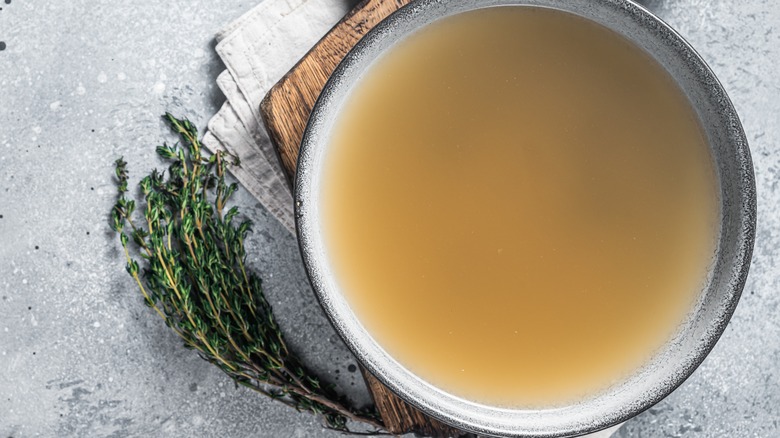Sweet Corn Will Take Your Classic Cacio E Pepe Up A Notch
A traditional cacio e pepe features Pecorino Romano, Parmigiano Reggiano, black pepper, and a little warm pasta water, but swapping that pasta water out and adding a sweet corn stock to this dish will take it up a notch. The reason pasta water is used in sauces is that the starchy quality of this cloudy-looking liquid adds a creaminess to your pasta sans the cream.
However, when you make cacio e pepe and use a homemade corn stock, you still get all that lovely starch, but with an added sweet corn flavor that is unique. In fact, Charleston-based chef Michael Toscano of Le Farfalle exclusively told Tasting Table, "The corn, in this case, is a subtle sweetness that is a perfect addition to a classic salty, savory, piquant flavor profile of the Roman cacio e pepe." It's so good, that we adapted Toscano's sweet corn cacio e pepe recipe. So, how do you make corn stock?
Corn stock has other uses
Corn stock is made using bare corncobs that have been stripped of their raw kernels. Those cobs still have sweet and starchy milk in those indentations where the kernels used to be. Place the cobs in water along with some peppercorns, bay leaves, and thyme, and boil. It's that simple. Once the stock cools you will want to strain it to get rid of any corn cob solids.
This corny stock will infuse its richness into your pasta and complement the savory cheese flavors, creating a sweet creamy version of cacio e pepe. Additionally, cooking the kernels until they are tender and adding them to the pasta will provide a lovely texture. That said, once you get the hang of making corn stock, you don't have to save it just for cacio e pepe. Michael Toscano recommends using it in place of chicken stock for vegetarian-friendly recipes. A risotto or soup made with corn stock will be lovely, and the stock can also be perfect for braising meat if you want to add a little sweetness.

